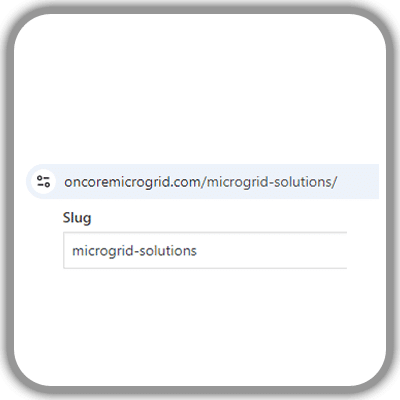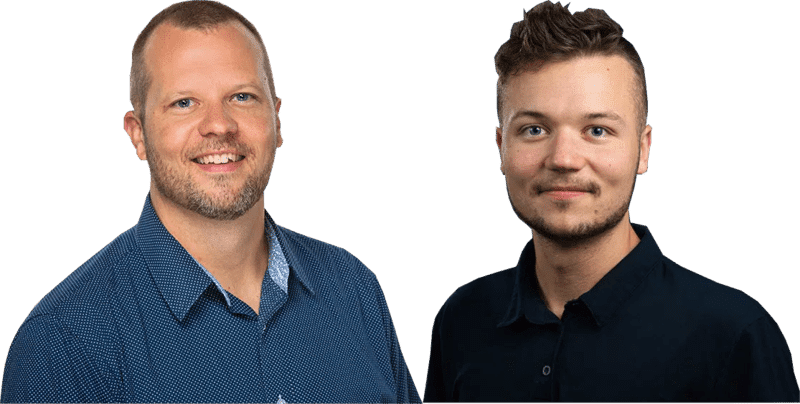What in the world is "On-Page SEO"?
This is getting in the weeds of how search engine marketers and professionals categorize their work.
There are three main areas of SEO: On-Page, Off-Page, and Technical SEO.
On-Page SEO (sometimes called "On-Site SEO") is the process of optimizing all content and HTML code on your website. This may seem redundant at first...after all, isn't a website the only important aspect of SEO?
Technically, the goal of SEO is to optimize your visibility in search engines, whether or not this applies to your website. Since there are other categories of SEO that don't directly involve the things on your website (external links, directory profiles, "barnacle SEO", etc.), we can justify having a category for on-page SEO.
200+
Google uses over 200 ranking factors in its algorithm
63%
63% of Google searches occur on mobile devices in the United States
62%
62% of consumers say they will disregard a business if they can’t find them online
Get started improving your on-page strategy.
Let's improve your website together. Schedule an exploration call with our team to see if we are a good fit for you.
Get started improving your on-page strategy.
Let's improve your website together. Schedule an exploration call with our team to see if we are a good fit for you.
Elements of On-Page SEO
A good webpage should have depth, be user-friendly, have unique content, be trustworthy, and match the user intent of a search.

Written content
The words written on your website to describe your business or to help solve a problem for your reader. Overall quality of content matters, a lot. In fact, Google has published documentation talking about how writing people-first content is a core component of what they view as high-quality content.

URL optimization
The details of a URL structure can make a huge impact on search engine results. A good URL structure should be clear, and concise, and describe the core goal of a webpage. (For example, /bikes-for-sale is much better than /page1-default)

User experience (UX)
This is the ultimate boss in building a website: how the user experiences the interface. The design, colors, button sizes, scrolling effects, links, and more can have a huge effect on how they perceive you as a brand. By keeping users happy, it keeps them on the website. In turn, this helps you rank in the SERPs.

Images & graphics
There must be time and consideration into how images are placed on a website. Simply uploading an image from your camera roll and calling it good will not work. It's important to resize to fit the space, compress the image, use an organized file naming convention, and write descriptive alt text.

Internal linking
Linking pages on your website to other pages is an essential part of helping users understand the relationship and location of each page. Search engines like Bing even say they use internal links to discover new content and new pages.

Meta descriptions & Title tags
These are often overlooked aspects of a solid on-page strategy. All meta descriptions and title tags should be optimized on your website. (Some sites we inherit don't even have meta descriptions!)

Mobile browser friendly
It's crucial to build webpages to the experience of mobile browsers. If you've ever tried to use an unoptimized webpage on an iPhone, you'll know what we mean. A website should be intuitive to use on a mobile device.

Keyword research
Every SEO campaign we work on involves keyword research. Our team has been doing this for years, finding variations you might not even realize your audience is using.
Data on how On-Page SEO performs
Our SEO team publishes written case studies on client results. This was an initiative launched in 2024, and we are working to compile even more documentation going into the next several years.
Local SEO is part of the strategy
Getting results in a local area, city, or region is a big part of our focus. This is called "local SEO" and we have an entire page dedicated to the local search strategies we use at Bluestem Media. Anytime we are doing keyword research, building webpages, or writing copy focused on a specific area, this is considered on-page work. Our local SEO work happens with many service-area-business clients.

Turning industry jargon into on-the-ground results for our clients
At the end of the day, our clients expect their websites to generate traffic and leads. It doesn't matter if we use fancy jargon like "on-page" or "off-page" if the website doesn't provide leads.
We see our jobs as being a liaison between the technical industry and the common sense of running a business. Our team will help translate the knowledge of the industry into straightforward terms. Bluestem Media believes business owners and key stakeholders should understand how traffic from search engines has an effect on their business in real terms.
There are three sets of KPIs we look at for each client: traffic, ranking, and conversions. All three are discussed in reporting and during calls.
Key Performance Indicators (KPIs)
Leverage 30+ years of web experience
You will be working closely with our team, which has 30+ years of combined experience in web design, web development, search engine optimization, content marketing, and graphic design. Our approach is to be as down to earth as possible, and teach you new concepts you need to do more business. We would love to get on a call with you to help you get your local marketing strategies in order...even if it's just a quick 30-minute chat.

Bluestem Media is the top SEO agency in Pensacola!


